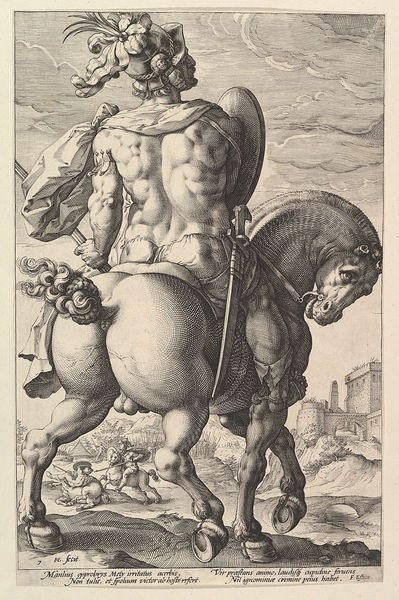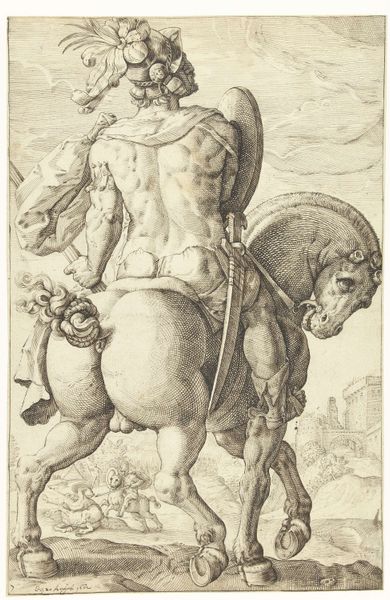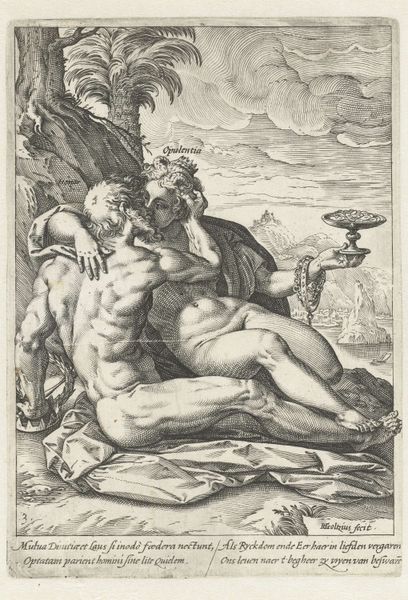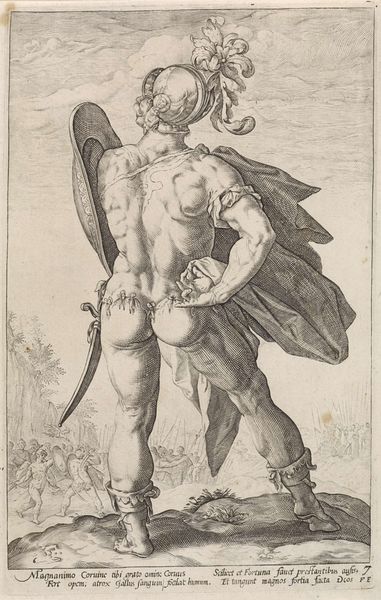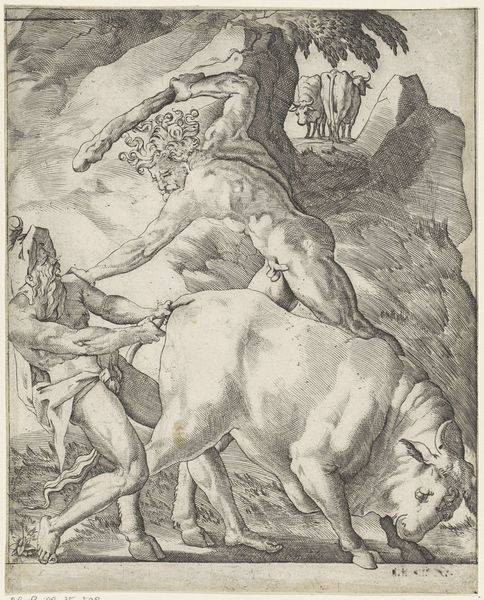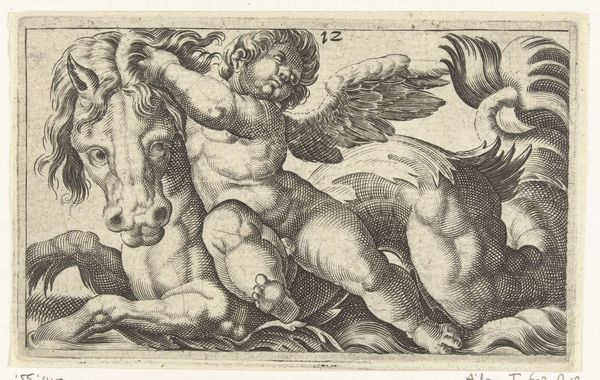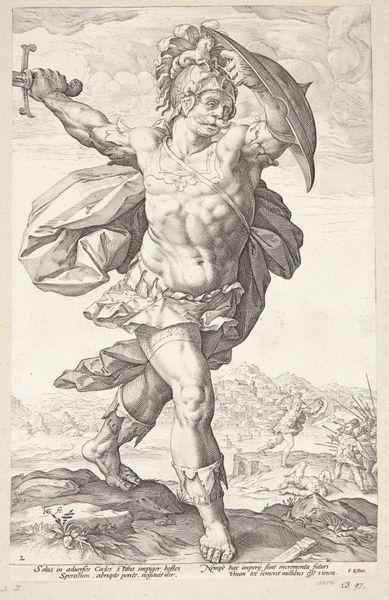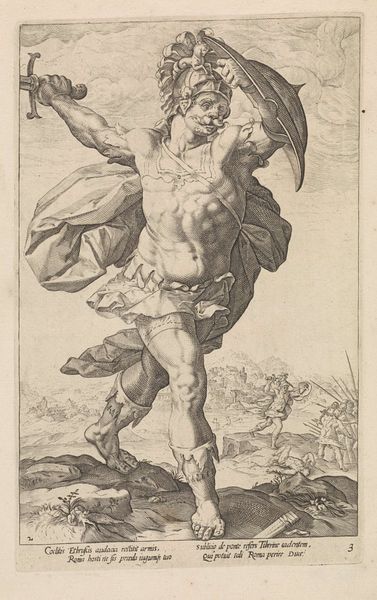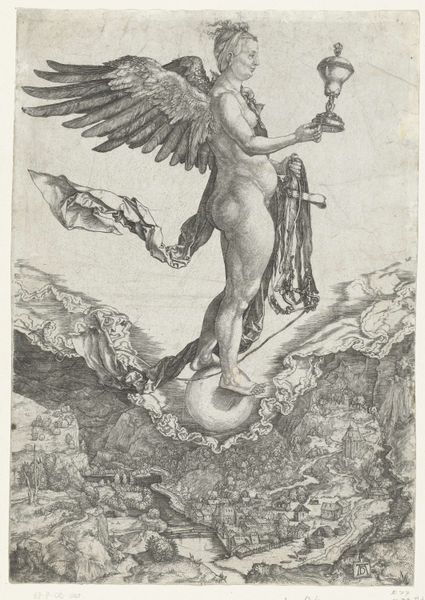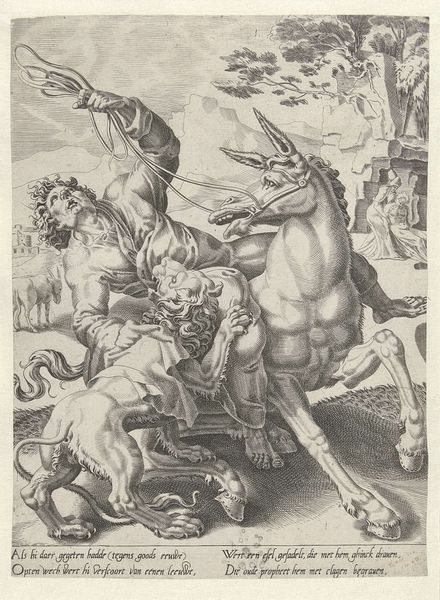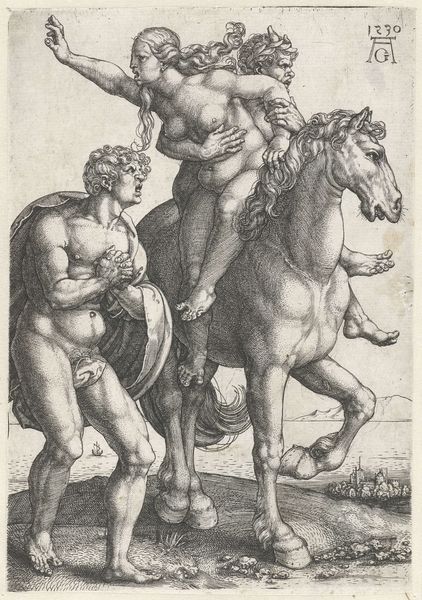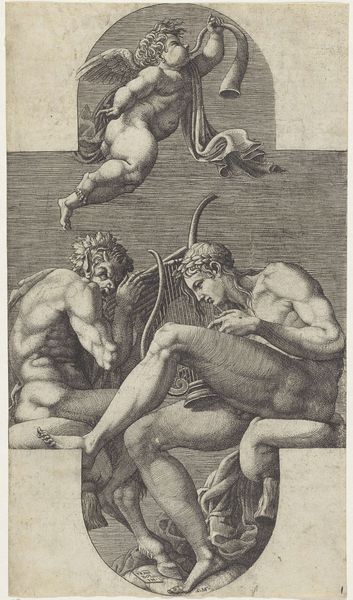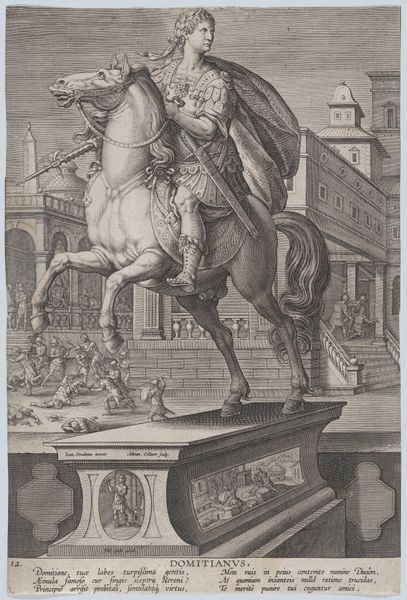
print, engraving
#
portrait
#
baroque
# print
#
figuration
#
history-painting
#
engraving
Dimensions: height 247 mm, width 159 mm
Copyright: Rijks Museum: Open Domain
Editor: Here we have an engraving called "Titus Manlius te paard," dating back to the early 17th century. The artist is listed as Anonymous and it’s held at the Rijksmuseum. I'm struck by how the figure's muscularity is emphasized through the medium of engraving; you can almost feel the pressure of the tool. What do you see in this piece? Curator: What stands out for me is the labor embedded in its creation. Consider the engraver meticulously working the plate, each line a testament to their skill and the demanding nature of printmaking in that era. How do you think this process relates to the social standing of the artist versus the depicted subject? Editor: I hadn’t thought of that! So, you’re saying the sheer amount of work that goes into this engraving creates a social commentary, a power dynamic almost? Is the depiction of this muscular leader on horseback also supposed to make us think about the cost of manpower? Curator: Precisely! Look at the materials used: the metal plate, the ink, the paper. All these had value, and access to them reflected one's place in society. And notice the historical narrative, perhaps idealized, being carefully reproduced for wider consumption. Editor: So the very act of reproducing this heroic scene is tied to larger economic and social systems. Curator: Exactly. The print served as a means of disseminating propaganda and reinforcing existing power structures. It's not just about the image, but about the means of its production and distribution. Is there a difference here from contemporary society’s ways of image production? Editor: That's fascinating. Now I see the work not just as a portrait, but as an artifact deeply embedded in the material conditions of its time. Curator: It allows us to reflect critically about what remains and what’s been lost through reproduction.
Comments
No comments
Be the first to comment and join the conversation on the ultimate creative platform.
